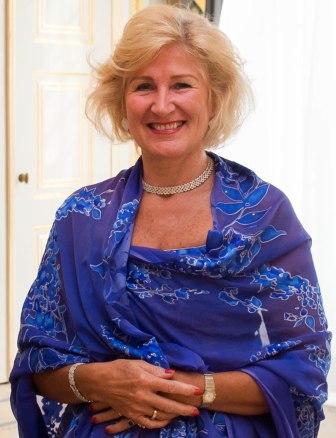 President of the Republic of Uganda H.E. Yoweri Kaguta MUSEVENI |
 H.E. Ambassador Ms. Mirjam Blaak-Sow |
Government
Government
Uganda is a Republic and gained independence from Britain on 9 October 1962. She is a member of the United Nations, African Union, The East African Community, the Commonwealth and the Common Market for Eastern and Southern Africa (COMESA
The Government of the Republic of Uganda made up of three arms: The Executive, The Legislative and The Judiciary.
The Executive
The President heads the Executive arm of Government.
The President is the Head of State, Head of Government and Commander-in-Chief of the Armed Forces.
The Vice-President deputizes the President. Below the Vice President is the Prime Minister who is Co-Coordinator of Government and Head of Cabinet in Parliament.
The Legislature
The Legislative arm of Government is the Parliament of Uganda.
Parliament is presided over by the Speaker, and in his absence, by the Deputy Speaker both of who are elected by Members of Parliament from their number
Parliament consists of 303 members when fully constituted. The majority of Members of Parliament are elected through universal suffrage, with a provision for special interest groups namely: women, the armed forces, the disabled and youth elected through Electoral Colleges
The current parliament is the 8th Parliament of Uganda and comprises of:
-
215 Constituency Representatives
-
69 District Woman Representatives
-
10 Uganda People's Defence Forces Representatives
-
5 Representatives of the Youth
-
5 Representatives of Persons with Disabilities
-
5 Representatives of Workers
-
10 Ex-officio Members
For more on the Parliament of The Republic of Uganda:
The Judiciary
The Judiciary is the third arm of Government vested with judicial authority and is independent.
The Lord Chief Justice heads the Judiciary and is deputized by the Deputy Chief Justice.
For more information on the Judiciary go to:
For more information visit the Statehouse Official Website.

 Home
Home







